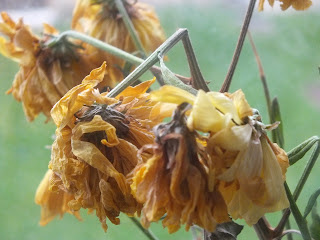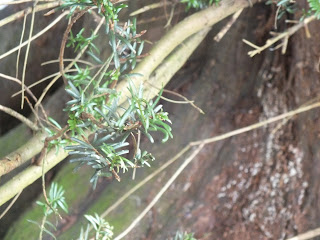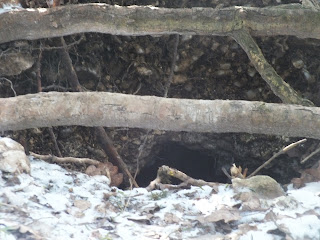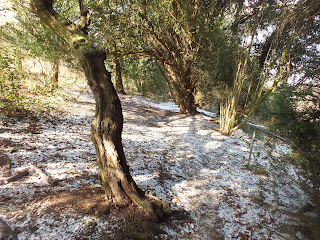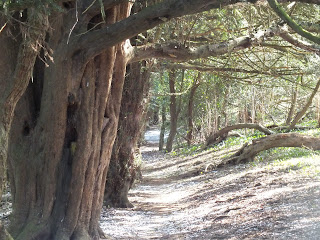Edited Shots
Slight touching up with photoshop
This is one of the various photos I shot on a film camera, these photos were taken on a little walk way near to my college. Although not entirely obscured, this was a starting point. Focusing my attention on hidden places I could obscure this photo in any way I desired. However in order to get to that stage I needed to enhance these photos first. So I took to photoshop to adjust the contrast and add more tonal value, I then used the colour balance and added a little 'Cyan' to the picture.Again, I used the curves tool along with the colour balance tool as well (cyan) in order to create this effect. I was previously told to try the dodging and burning this photograph in order to keep the haziness that appeared on the right, and the darkness and contrast of the trees on the left.But when experimenting the the curves tool a little more I ended up with this outcome.
With most, if not all of the photos I took, they needed to be adjusted in terms of contrast, so I used the curves tool to adjust each one.
This one, on the other hand, was a different story. This was a handmade negative I had created using acetate, vaseline and salt, after sandwiching the acetate into the negative holder, I developed this on the photographic paper and this was the outcome. I used the clone stamp to patch up a few areas that went undeveloped, and in all managed to create this. I enjoyed making handmade negatives, and although I don't exactly have any plans to take it further, it was a lovely experiment.


















